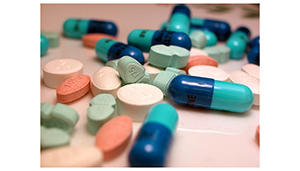 Researchers at the University of Illinois and the Agency for Science, Technology & Research in Singapore are using the gene-editing tool CRISPR-Cas9 to uncover potentially useful drug compounds.
Researchers at the University of Illinois and the Agency for Science, Technology & Research in Singapore are using the gene-editing tool CRISPR-Cas9 to uncover potentially useful drug compounds.
The team has used CRISPR-Cas9 to turn on “silent” gene clusters in Streptomyces and express genes that naturally produce drug compounds to be used as antibiotics or anti-cancer agents. Their work was published in Nature Chemical Biology.
“In the past, researchers just screened the natural products that bacteria made in the lab to search for new drugs,” lead author Huimin Zhao said in prepared remarks. “But once whole bacterial genomes were sequenced, we realized that we have only discovered a small fraction of the natural products coded in the genome.
“The vast majority of biosynthetic gene clusters are not expressed under laboratory conditions, or are expressed at very low levels. That’s why we call them silent. There are a lot of new drugs and new knowledge waiting to be discovered from these silent gene clusters. They are truly hidden treasures.”
The researchers used computational tools to identify small groups of genes involved in making chemical compounds. Then they used the CRISPR tool to insert a promoter sequence before each gene, triggering the cell to make the products that the clusters code for.
“This is a less-explored direction with the CRISPR technology. Most CRISPR-related research focuses on biomedical applications, like treating genetic diseases, but we are using it for drug discovery,” Zhao said. “In the past, it was very difficult to turn on or off a specific gene in Streptomyces species. With CRISPR, now we can target almost any gene with high efficiency.”
The team isolated and determined the structure of 1 of the novel compounds produced from a silent gene cluster. They observed that it has a fundamentally unique structure compared to other Streptomyces-derived drugs. Zhao pointed out that a new drug discovery method could lead to new classes of drugs that elude antibiotic resistance.
“Antimicrobial resistance is a global challenge. We want to find new modes of action, new properties, so we can uncover new ways to attack cancer or pathogens. We want to identify new chemical scaffolds leading to new drugs, rather than modifying existing types of drugs,” he added.

